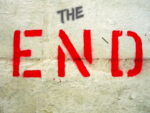Playing With Wolfgang: My Dog Ate My Minuet
The first time I ever worked on a Bach dance movement I felt like I had encountered an alien landscape. I had grown up on Bach chorales but somehow those sober, staid, and reverent tunes just did not help me with the dances. Of course, I am the person who was laughed out of the tryouts for the dance numbers in our high school musicals.
Over the years, I have grown to love the forward motion and feeling of “ups” in baroque dance music. My students, upon meeting them for the first time, seem to feel an awful lot like I did about them. They get that deer in the headlights look a few weeks into their practice and put the score at the bottom of their stack under even the etudes and scales. Maybe I’ll forget… They tell me their dog ate it.
Last week, I gave a workshop and anti-masterclass. The focus was on making music speak. Since a personal connection to Baroque dance suites can be tricky, I included a separate section on it. We watched parts of Maurice Hinson’s classic video on Baroque music. In the Baroque dance segment, he describes the history and footwork (with examples) and then plays well known keyboard dance movements along with the dancers.
After we watched, I had some volunteers who had been working on Bach dances play a short section of their pieces and we talked about how to translate what we had seen into sound. There was an amazing transformation. At the anti-masterclass, comments to performers included references to the video without prodding or leading on my part. The performers made significant changes toward a feeling of up and motion.
What’s an anti-masterclass you ask? That is the subject of another blog post which if we are very lucky, the dog will not eat.
Here are some cool videos of dance interpretations of baroque music. Enjoy!
Cloud Gate Dance: Bach Cello Suite
Bach Dance Theater (humorous but with a point of view)
Historical Performance Ensemble



